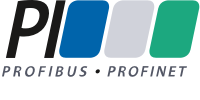Project
Already in 2008 Australia´s Fortescue Metal Group completed construction of two new mines at the Chichester Hub and the Herb Elliott port and rail infrastructure at Port Headland. PROFIBUS was used as the exclusive fieldbus technology for all electrical and control networks, providng itself to be particularly reliable in rugged environments with extreme temperatures and noise.
In late 2011, Fortescue started a new project at the Solomon Hub, 120km west of the Chichester Hub. For PLC-to-remote-I/O communications, the Solomon project used PROFINET. This future-proofed the installation, and allowed synergy with General Electric’s capabilities since GE had standardized its Proficy Plant Systems (PPS) platform on PROFINET in 2012.
Solution
In all, the project involved 200 PROFINET devices and 35 PLCs. The System integrator (I&E Systems) also designed and commissioned over 50 GE Cimplicity HMI workstations, and 15 servers. Managing for availability and redundancy was a major challenge during network planning. By using a ring topology on each PLC, I&E Systems could easily isolate equipment for increased commissioning and maintenance flexibility. “We commissioned a sample station which had its marshalling panel in the middle of a ring of marshalling panels for a conveyor,” lead engineer McCarthy explained. “We could power down the marshalling panel, but the conveyor would stay running due to the dual paths of the ring”. To complete the project, PROFIBUS was selected for inter-PLC control of Solomon’s processing infrastructure. This includes the crushing plants, seven overland conveyors, the Ore Processing Facilities, a wet plant, stockyard, and the train load-out.
Conclusion
Fortescue Metals continued to trust in PI´s communication technologies by choosing again PROFIBUS and, even more, also PROFINET in order to benefit from its outstanding advantages for the project. These include
- Deployment of thousands of easily-replaceable nodes on a single network
- Rich network alarm and diagnostic capabilities
- Devices identified by application-specific Device Names; each D&C package builder could independently name their devices, while still ensuring consistent node addresses and
- The ‘Neighbor Recognition’ feature allows faulty devices to be replaced and automatically configured without specialist tools or knowledge, enabling cost- effective maintenance after handover


